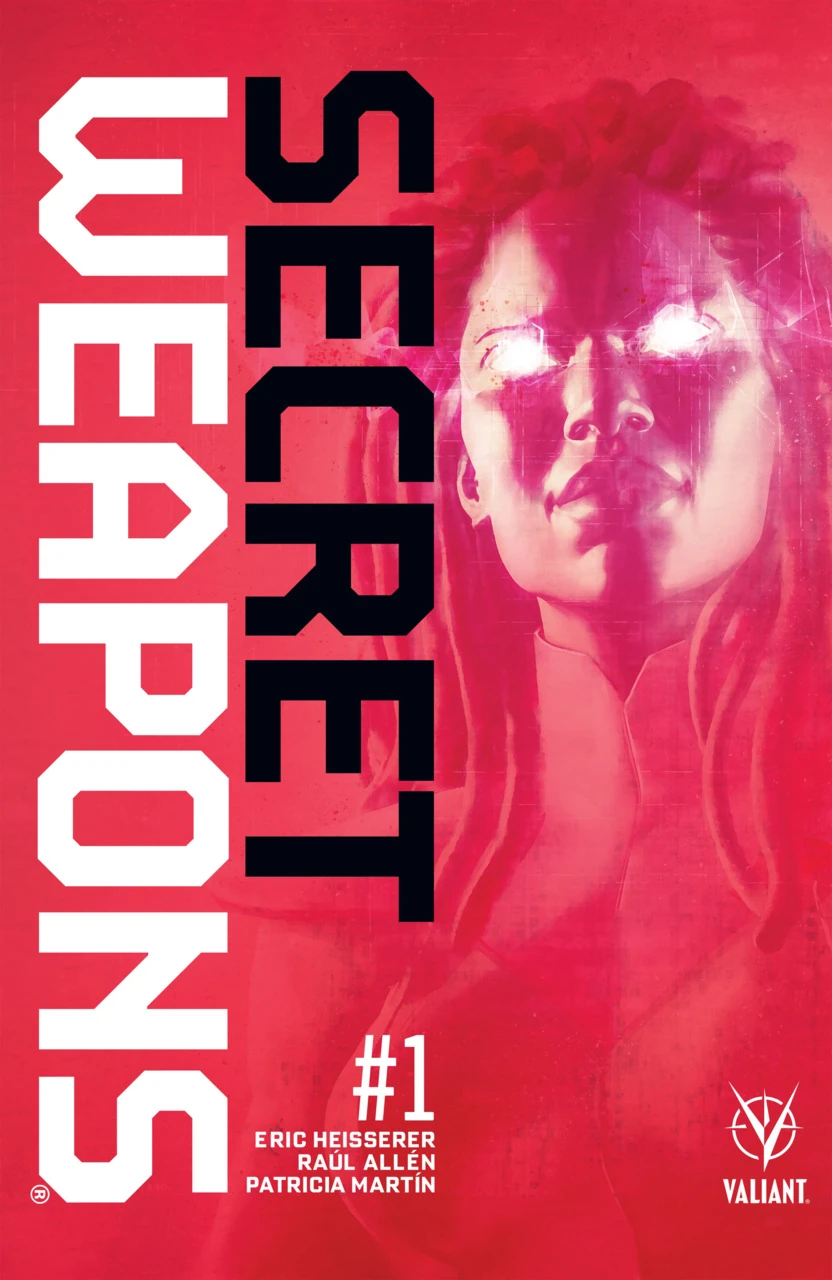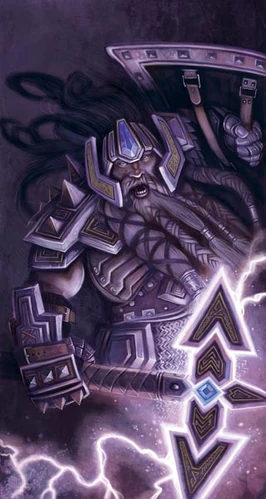I thought "Cantripper" would be a fun name for them, since these are kind of like Vancian-magic Cantrip-level superpowers, and I'm always a fan of adding superpowers to an otherwise traditional fantasy setting.
These could just be a background element of the game, but I think it would be fun to build a whole adventure around them. You could go the narrative game route, which might be easier, but it might be fun to implement these powers in an already underpowered system like OSR, where the players will have to come up with really clever uses of their powers in order to survive.
- No reflection.
- Can see one second into the future.
- Can levitate while running off a cliff so long as they are unaware that they are not on the ground (cartoon-style).
- Invulnerable except for an Achille's head and heart.
- Can speak to the recently dead (within six minutes of their death). The dead are exactly as coherent as they were at the moment of their death, and generally panicking over the existential and metaphysical dread of their situation.
- Can turn invisible but only when no one is looking.
- No body odor (entirely scentless).
- Can eat anything (like a goat). Only derive sustenance if the ingested item has nutritional value.
- Can turn any static image on any surface into a gif-like animation loop for up to one minute.
- Can produce spider-sized spider webbing.
- Can speak to cats. They are exactly as communicative and cooperative as you would expect.
- Abnormally long tongue that is prehensile, retractable, detachable, re-attachable, regenerative, and operates independently with its own nerve cluster, like an octopus tentacle (and is maybe telepathically linked to its person).
- Swaps dreams with any random person each night.
- Has somehow acquired expert-level knowledge of a seemingly non-existent topic, like the biology of an unknown species or geography of an undiscovered land.
- Can produce a flame equivalent to a match from their own metabolism, or extract excess clean fresh or salt water from their body.
- Bone structure, height, weight, and other physical features are constantly shifting. Changes are noticeable day-over-day; clothes they wore at the beginning of the week no longer fit by the end of the week.
- Can create a room-sized devastating explosion, only once.
- Can alter their own brain chemistry to induce any kind of inebriated / psychoactive state.
- Can prepare a supernaturally delicious meal from any ingredients. The meal appears as the best version of itself but nothing more, and the nutritional value is unchanged.
- Receives an unintelligible signal (telepathic, electromagnetic, magical, etc.) from an advanced lifeform that may (or may not) be a deity, or the epicenter of all reality.
- Eyelids are one-way screens through which they can see even when closed.
- When they close their eyes they see through any random person's eyes.
- Can adjust their perception of different acoustic signals as if they had volume control over all sounds in their environment. This ability does not alter the loudness of the sounds, just their perception of it.
- Long or thick tail that may or may not be prehensile.
- Do not appear to age, but still experience the effects of aging / mortality.
- Can adjust their height between 5'1'' and 6'6'' within the span of half a minute.
- Can vocalize a loud, air horn-like sound.
- Can levitate six inches off the ground for six seconds at a time.
- Is immune to the psychoactive effects of any substances, but is still vulnerable to other physiological effects (e.g. won't get drunk, but can die of alcohol poisoning).
- Can summon an ineffectual, cartoon-ish, teddy bear-like pet / companion. It can't talk, but makes cute noises. It is lovable, but mostly useless. It will try to follow simple commands to the best of its ability, but often fumbles even the simplest tasks in astonishing and humorous ways. If destroyed, it can be re-summoned within a day (or you can remove this regenerative ability if you want to get really sad with it...).
- Has the proportional speed and metabolism of a sloth.
- For any possible occurrence, they can increase or decrease the probability by 1% in their favor (e.g. the probability of winning the lottery goes from ~0.0000000715% chance to ~0.0000000722% chance).
- Sour foods taste sweet to them, as if they are always under the effects of miracle fruit.
- Immune to boredom.
- Experiences one or more unique or inexplicable emotions, such as an emotion vaguely like "manic annoyance" triggered by dogs that are slightly less cute than they should be, or "meditative aggro" triggered by a good workout towards the end of the day. Brain scans would suggest these emotions have unique neural activation patterns or even unique neurobiological circuits, not unlike fear and arousal.
- Can change their eye and hair color at will, including exotic coloration.
- Can turn gold to lead.
- Has a supernatural "presence". Not a literal aura of light, but they always stand out in a crowd.
- Lays eggs, independent of gender. The appearance and taste of the eggs is best compared to that of a platypus or echidna. The eggs cost as many calories to produce as they provide. They feel a pressure to lay an egg usually once or twice a day, and can suppress the feeling for a while, but as with bowel movements, will eventually need to go.
- Muscle flexion produces flashes or sparkles around them. Sometimes it also produces a BAM noise.
- Eidetic-like memory, except the memories are always incorrect in some critical way.
- Quantum-entangled with a self-aware machine or golem on a distant, empty celestial body. They perceive its contemplations about life and the vastness of spacetime and the meaning or meaninglessness of the universe, like a running monologue.
- No shadow.
- Can change the color of non-living things by touch.
- Supernaturally broad vocal range.
- They are extremely fragrant, but can control the scent of their body odor, such as to smell like chocolate or roses.
- Can draw a mathematically perfect circle, down to the sub-atomic level, that maintains its perfect state across time, regardless of the movement of particles. Has absolutely no conscious awareness of how they can do this.
- Has a mostly cosmetic supernatural phenotype, like a beak, scales, unnatural skin or hair color, tentacles for arms that are effectively only as functional as regular arms and hands, cyclops eye (may or may not affect depth perception), etc.
- Tough soles on their feet that provide equivalent protection as hiking boots.
- Their brain is a literal black box. They seem to have normal consciousness for their species, the black box is as vulnerable as a regular human brain, and seems to respond to stimuli and chemicals in the same way as a regular brain, and yet its exact mechanics are completely inexplicable.
- Colorful shadows.
- Their reflection is of a different person.
- Can alter the way things taste (no nutritional / health changes).
- Their shadows act independently, and can stretch or compress to roughly twice or half size, change shape, and rotate around them.
- Once a day a random piece of factual trivia that they did not already know springs to mind. This may be something they have insufficient context to understand, or something they could not have otherwise ever learned.
- Supernaturally boring.
- Always warm to the touch. This has no effect on their biology and does not protect them or others from freezing.
- Always cold to the touch. This has no effect on their biology and does not protect them or others from overheating.
- Is a were-carp. Can transform at will, but is compelled into transformation in the presence of waterfalls. They will ignore everything in the presence of waterfalls and attempt to swim up the waterfall until they bring themselves to exhaustion. They have the proportional strength, intelligence, and other abilities of a carp.
- While they are alone, a pocket dimension opens 10'x10' around them. There is a 5 in 10 chance it is indistinguishable from the space it is replacing, 4 in 10 chance to be weird but harmless (or maybe even pleasant), and a 1 in 10 chance to be their personal hell. When the pocket dimension closes, any positive or negative effects of the space are reversed as if they never happened.
- Can transform into an animal for 1d6 minutes. During their transformation, they have the intelligence and behaviors of that animal. They may or may not have the ability to control what kind of animal they turn into.
- Every day, a random single moment (no more than 1 minute in duration) is eidetically encoded into their memory.
- Once per day at a random time they experience divine bliss and cosmic awareness for 1d6 minutes. They have little ability to interact with the material world during that time, and their memories of the experience are hazy and dreamlike, and difficult to derive meaning from.
- Super-speed, but susceptible to the shearing force of that speed on their body, the force of colliding with another object at that speed, and the force of inertia if they attempt to stop abruptly. Even with practice, utilizing the super-speed is extremely dangerous.
- A healing factor that makes them susceptible to ugly scars, broken bones healing incorrectly, rapid cancer metastasization, rapid over-development of muscle tissue, and similar negative consequences, in addition to the obvious positive benefits.
- Emits perpetual low-grade EMPs within a 6" radius around them; all electronics shut down, and magnets lose their attractiveness.
- Can transmit energy equivalent to a potato lightbulb.
- Automatically knows the curse words of any language they encounter. This does not transmit any magical properties of those words if they are literal curse words!
- Non-magical, non-intelligent cats will respond to their commands equivalently to a moderately well-trained dog.
- Supernaturally talented at something highly specific and mostly useless, like playing a single videogame that nobody cared about even when it came out 15 years ago let alone today, or making savory jello salad, or something else like that.
- Slugs, snails, and related creatures of a non-magical and non-intelligent nature are attracted to them. It is not uncommon for them to find a cluster of slimy things waiting for them when they exit a building.
- Can perform simple prestidigitation. If they are a magic user in a setting where magic users already can use prestidigitation at no cost, they can do prestidigitation of twice the magnitude than would normally be possible, or two separate instances simultaneously.
- If they carry no currency, they gain the equivalent of $1 once per day.
- Can make non-living things shiny by touching them.
- Can make non-living things sticky by touching them. They are not especially adhesive, just kind of gross and uncomfortable to the touch. Clammy.
- When they go to sleep, they pop out of existence. When they wake up, they return exactly where they were, as they were. Anything that would trigger wakefulness, such as a knock on the door or an alarm, also returns them.
- Once per day at a random time, they pop out of existence for 1d6 minutes, after which they return exactly where they were, as they were.
- Can instantly kill any mundane creature with a single finger strike, but the finger falls off shortly thereafter. They have a sixth finger on each hand, so they can use this ability 12 times in their life. If they have extra fingers, extra hands, or no hands, it still works 12 times by some other identifiable means.
- Despite appearances, they are actually of a different kingdom than their origin species, e.g. if they were birthed from animals, they are actually a fungus, or if they grew from a fungal spore, they are actually a bacteria. This affects what kinds of diseases they may contract, genetic disorders they may have, and certain other biological functions, but they are mostly functional and passable as their origin species. Magic operates on them as if they were their origin species (it's like how tomatoes are considered vegetables in a culinary sense even though they're fruits in a biological sense).
- When they must wait in a line the line moves supernaturally fast and smooth and/or they somehow get to cut through some or all of the line. This also applies, to a lesser extent, to traffic and other bureaucratic "lines" like customer service or dealing with paperwork.
- Maintains moderate physical fitness even with poor diet and exercise. If they want to actually be or appear athletic or muscular, they'll still have to do some exercise and have some consideration for their diet, but less so than other people.
- Zeitgeist; without consciously understanding what, how, or why, they can design logos, catch-phrases, and jingles that capture the zeitgeist. The things they create are not magical or supernatural, they're just really on-point.
- Both conscious and unconscious ability to control their circadian rhythm. Will always get the best possible night of sleep. Can make themselves practically unwakeable, or quickly readied at the slightest interruption. Seamlessly switch between different sleep modes such as micro-sleep. Will always dream or lucid dream, if they want to.
- Is cold blooded (or if their species is already cold blooded, then is warm blooded).
- Color vision is as acute in low-light as it is in normal light.
- True multitasking; can effortlessly maintain two separate trains of thought, or more with penalty (as normal multitasking).
- Once per day, can reverse time by up to 6 seconds.
- Has a fully functional extra appendage.
- If they are hungry, carrying no food, and have no currency or no other access to food, they can summon a food item with the equivalent nutritional value of a deli sandwich once per day.
- Produces excessive amounts of earwax which can be used as wax (e.g. for candle making).
- Produces excessive saliva of varying viscosity.
- Has relatively brittle, nubby little horns (if their species already has horns, they now have more horns, but of a relatively brittle and nubby kind). Getting poked by them would kind of hurt. They grow like nails but only up to a short length.
- Can alter probabilities, but only when using randomization devices such as cards or dice, and only when the results have not been made deterministic (such as somebody effectively counting cards, or using loaded dice). The magnitude of their ability is more like a "nudge" than it is like loading the dice or fixing the deck.
- Can produce beams of colorful lights and sparkles from their hands. They have no effects besides being bright.
- Can convert non-living things made of mundane stone (e.g. non-magical, non-psionic, etc.) into other kinds of mundane stone of a comparable mass, hardness, economic value, and other quantitative and qualitative differences.
- They can integrate clothing, armor, weapons, and tools into their own biology, like their skin, muscles, and nerves intertwining with a suit of armor. It takes roughly a day to fully integrate the item or to separate from it (somewhat varying by the size and complexity of the item). This provides little to no additional advantage, besides it becoming a natural and comfortable part of their body, and is not removable except by intentional or violent means.
- Have the very niche psionic ability to press buttons or dials, turn knobs, or make other simple mechanical gestures, by blinking.
- Their body is completely hollow. In every way their body operates as normal (normal weight, nutritional demands, ability to consume foods, be poisoned, choke on food, etc.), but they can also open themselves up from a number of latches on their body only visible and operable by themselves, and store up to their body size of stuff. Those things do not affect their weight and are effectively in stasis until they reopen themselves.
- Has a potato-like body and the ability to swap out their body features with spare parts. This technically makes them more resilient to mutilation and injury than a normal person, but they can still feel pain and be killed.
- Can expel a substance like vanilla pudding from their hands in short spurts, with just about enough force to knock over an average-sized human child. The pudding is bland and not especially tasty, nor does it have any nutritional value or provide a sensation of satiety. It evaporates into nothing in less than a minute. They can build up more pudding for slightly greater effect by not using their power for a while. The process of expulsion is weirdly pleasurable to them, and not using their power for some time can be uncomfortable.








